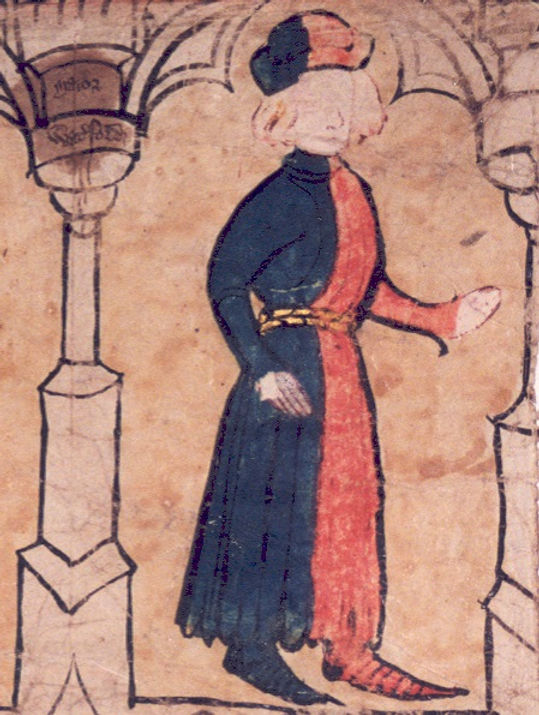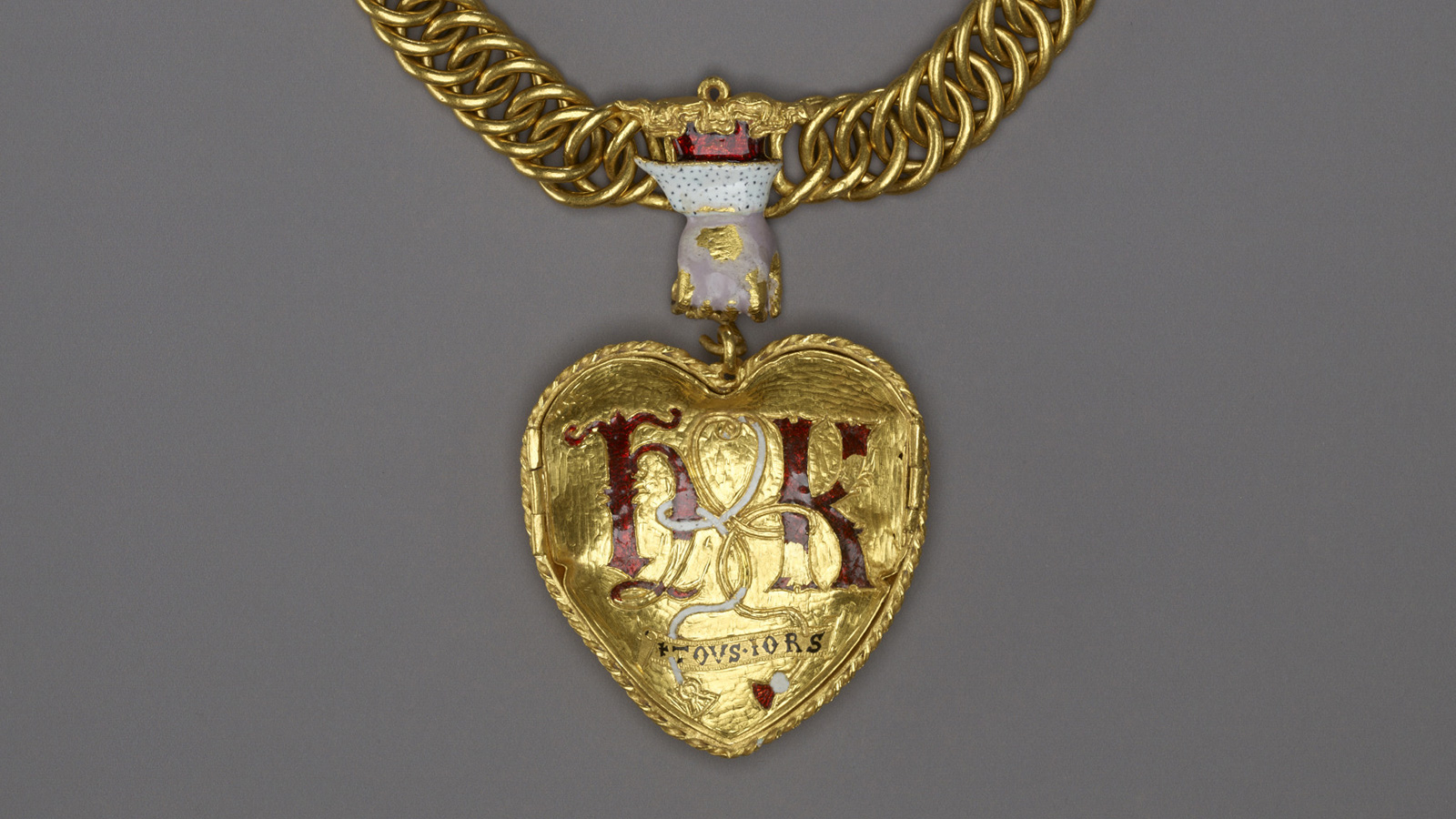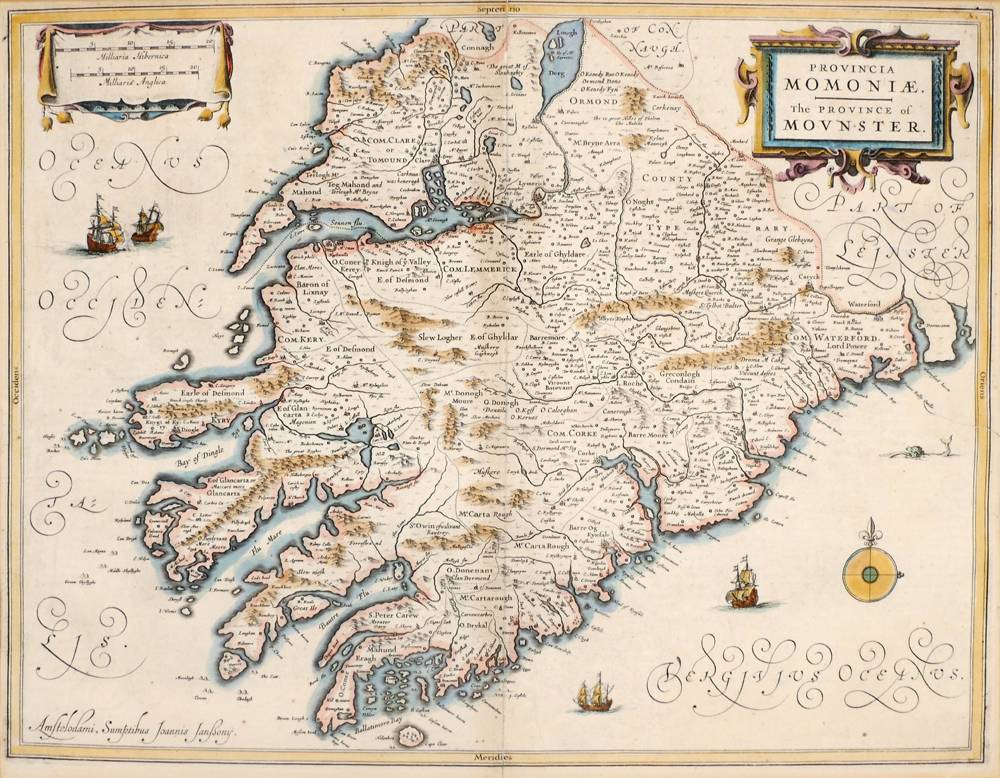
In July 1912, a large number of historians descended on Waterford City Hall for a conference held by the Royal Society of Antiquaries of Ireland. After refreshments had been devoured and speeches given, the members were then brought to see some of the city’s treasures, locked in the council’s safe. Perhaps unsurprisingly for a bunch of historians, a group who tend to spend more time in archives than is perhaps entirely healthy, though they admired the city’s great ceremonial swords and Henry VIII’s Cap of Maintenance, what they found the most remarkable was an unusually large piece of medieval paperwork…

The Great Charter Roll, now in Waterford’s Medieval Museum
At a length of nearly four metres, the Great Charter Roll of Waterford is certainly striking. It is composed of fifteen charters of various shapes and sizes, placed in chronological order and sewn together to create a long strip of parchment. Charters were documents that granted the recipient property or certain rights – a bit like a permission slips really, but better, because they came from the King, and were therefore legally binding. Medieval cities were very keen to have these charters, because they gave more rights to the inhabitants, and certain privileges to the city, which were usually linked to things like paying lower taxes. Waterford got its first royal charter in 1215 from King John, and when he died, his son Henry I re-confirmed the city’s rights in a charter of his own. This pattern continued with each king, and so Waterford developed a fine collection of these royal charters.
Now, clearly the city was proud of all these charters and determined to keep them safe, and we know that sewing important documents together and rolling them into a tidy bundle was a fairly standard way of filing in the medieval period. However, the Great Charter Roll was not meant to sit quietly on a shelf, for this is the only illustrated charter roll in existence. Eighteen pictures are sewn onto the sides of the roll and illustrated mainly in red, blue and gold. They depict all of the kings who gave Waterford charters, from John I to Edward III, some prominent Irish politicians, and at the top, Waterford itself. Such large illustrations did not come cheap, so why did the officials of Waterford choose to splash their cash on this rather than, say, some of the nice French wine that was being shipped into the city? The likeliest explanation is that this was a canny investment – spend today, have the money to buy more wine tomorrow…

A medieval pipe roll
Medieval admin: a picture of a pipe roll, so called because (yes you’ve guessed it) it looks like a pipe. From http://www.piperollsociety.co.uk/page17.htm
The Great Charter Roll’s creation has been linked to a specific point in Waterford’s history – the city’s 1373 court case against the neighbouring port of New Ross. Ever since New Ross had been established upriver in the early 1200s, the two settlements had been competing over attracting the most trading ships. By 1373, in the depths of a recession triggered by the Black Death, this was more important than ever. Both Waterford and New Ross appealed desperately to the king, hoping he would grant them an economic advantage over their rival. The date certainly appears to fit the Great Charter Roll: its last document is a writ dating to 1371, and Edward III, who was king in 1373, appears three times on the roll, which suggests a slightly embarrassing amount of flattery. But how could this illustrated Great Charter Roll help resolve a trading dispute?
To begin to answer that, it’s best to first cross the Irish sea to Bristol, Waterford’s regular trading partner and another city with a special relationship with the king. After much petitioning from the citizens, 1373 saw Bristol receive a new royal charter, confirming its new status as an independent county. Edward III had decided to be generous since loyal Bristol had provided him with a steady supply of financial support during his (expensive) foreign wars. This charter, unusually, has a particularly flashy illustration at the top of the page: inside the first letter is a small portrait of the king, wearing a fine ermine cloak over a suit of armour quartered with the arms of England and France. Charters came from the king, but the recipient had to pay for any fancy embellishments, so this expensive illustration shows that the citizens of Bristol were particularly proud of this one. Importantly, the image of the king reminds the viewer why the charter is more than a pretty scrap of parchment: it bears the instructions of the most powerful man in the kingdom.

The beautifully decorated Bristol Charter. Edward III stands in the capital E beside the arms of Bristol. From https://i.pinimg.com/originals/5d/0e/8b/5d0e8bd189d197cc27c58ff40ec075b7.jpg
Images of kings were images of power, something which is perhaps best illustrated by the Great Seal of the Realm. Seals physically ratified the law. One of the tales from the Descriptio Northfolchiae tells how a group of peasants discovered this at great personal cost when, having received a charter of freedom from their master, they melted the wax seal on his charter into a candle and found themselves indentured again the very next day – very often, a document’s validity rested entirely on the existence of a seal. The Great Seal of the Realm was the most powerful seal of all and was used for stamping official documents approved by the king. Importantly, this royal seal bore the image of the reigning monarch himself, from whom all power flowed, the design indicating that the law and the king were ultimately one and the same. No such seals are attached to the documents of the Great Charter Roll, but, just like on seals, the kings are depicted in the same fashion, either on horseback or within elaborate architectural niches, all wearing crowns, several holding sceptres. By using these traditional ways of depicting kings, the Great Charter Roll implies that it bears the royal stamp of approval from several kings.


The Great Seal of Edward III, depicting the king as a fearsome warrior. Beside it, Edward III on the Great Charter Roll, holding a similar pose. Source: https://www.flickr.com/photos/nationalarchives/2977800339
Waterford’s Great Charter Roll depicts the power and grandeur of kings, but unlike the Bristol charter, it was not just intended for the eyes of the city’s wealthy merchants. Folding marks on the manuscript reveal that the roll could fold inwards to become 26cm in length making it easy to carry. In an attempt to gain a much-needed advantage over New Ross, the Great Charter Roll appears to have been put together as a ‘book of evidence’ to bring to London where the officials of Waterford were pleading their case against New Ross.
When it was laid out at the court of chancery, the lavish Great Charter Roll would have impressed the assembled audience of chancery clerks and intimidated New Ross’ representatives. The pictures immediately capture the viewer’s attention, while the finer details encourage the
audience to linger over the document, examining it further.

King John’s love of hunting is represented by the hawk on his arm; the dog underneath Edward I’s feet reveals the ruler’s marital fidelity. The illustrations reveal that Waterford was no cultural backwater, for though the Great Charter Roll’s form is unique, its art is typical; even the rabbits emerging from their burrows are motifs that recur elsewhere, as in a fourteenth century miniature of King John hunting (left), created by the workshop behind the Queen Mary Psalter. The architectural canopies around figures with the alternating red and blue backgrounds, resembles the Great East Window of Gloucester Cathedral, c.1350. Perhaps the artist had seen the window first-hand; either way, these similarities in style reveal that Waterford was culturally connected, just as the finely detailed clothing shows that the citizens of Waterford kept abreast of the latest fashions. (Only Archbishop Henry de Londres does not wear ridiculously pointy shoes, presumably because he is above such worldly vanities.) Through its art, the Great Charter Roll reveals that Waterford was a significant city of wealth, culture – and an asset to the crown.

Directly above: Detail from Gloucester Cathedral’s Great East Window, from https://www.flickr.com/photos/bethmoon527/7766179328
Above, left: King John of England, 1167-1216. Illuminated manuscript, De Rege Johanne, 1300-1400. MS Cott. Claud DII, folio 116, British Library. https://commons.wikimedia.org/wiki/File:King_John_from_De_Rege_Johanne.jpg

Edward III from the Great Charter Roll yet again, this time shown lounging on a throne.
Most importantly, the officials who commissioned the illustrations understood that meetings can be long and boring; in order for your point to sink in, you have to keep your audience interested. The decorations are functional, acting as a fun visual guide to the charters. All of the kings are next to their charters, and gesture towards them; Edward III rides his charger towards the text, guiding the viewer’s eye into the document. The line of royal portraits also create a sense of continuity between one king and the next, begging an unspoken question to Edward III – do you really want to be the king who breaks a successful tradition?
The image of Waterford at the top of the roll is the earliest depiction of an Irish city, and for good reason, since the city is as much of a character in this story as any of the portraits. It is unclear whether it is topographically accurate, but like a city seal, this image depicts the most important elements of the city. The city is a well-developed collection of whitewashed buildings, high towers, and tiled roofs, protected by high walls. The landscape around it seems abundant – fish swim in the river and in the foreground, rabbits scamper beneath trees. The city depicted here is developed, defended, and thriving. Most important of all is the river Suir, which curves around the city, ships – the key to the city’s wealth – sailing upon it. The image reminds its audience that Waterford had proved itself a useful asset for all of the kings along the roll. Given the amount of enemies the king of England had, he needed this prosperous, well-defended and loyal city every bit as much as Waterford needed him.

A reconstruction of the image of Waterford at the top of the Great Charter Roll, revealing previously unnoticed details. From http://www.rubiconheritage.com/2012/02/15/recreating-the-earliest-image-of-an-irish-city-the-waterford-charter-roll/#lightbox/3/
The art of the Great Charter Roll frames the legal documents within a persuasive narrative, telling the story of a beautiful city that has prospered for generations under a series of just and powerful kings. It’s a bit of a simplification perhaps, but then again, the most successful stories generally are. Look closely at the figures and you’ll notice they’re all wearing fourteenth-century fashion, even though the first charter was granted in 1215. It’s a good metaphor for the Great Charter Roll itself, which is far more interested in spinning a clever piece of propaganda than in compiling a completely honest record of the past.


